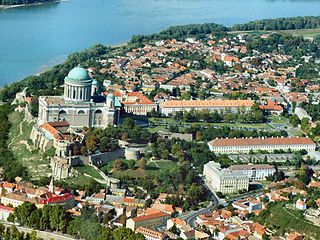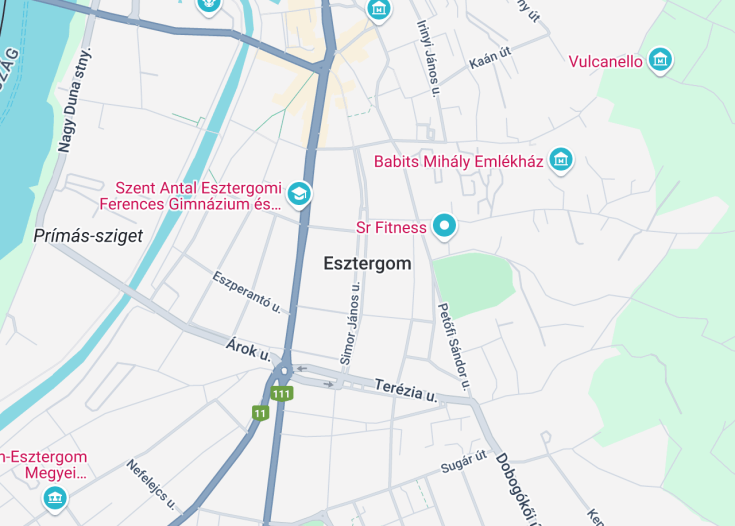Esztergom, often referred to as the historical treasure of Hungary, serves as a captivating blend of majestic architecture, religious significance, and scenic beauty. This city, prominently positioned on the banks of the Danube River, is renowned for its historic sites dating back to the Roman Empire.
Highlights include the Esztergom Basilica—the largest cathedral in Hungary—and the Christian Museum, which houses one of the most extensive ecclesiastical art collections in Europe. The city’s picturesque setting and rich history offer a unique journey through Hungary’s cultural heritage and a peek into the nation’s spiritual life.
For an immersive experience, don’t miss the sunset view from the Széchenyi Square, where the Basilica and the Danube create a breathtaking panorama.
Visit during early autumn to enjoy Esztergom’s beauty with fewer crowds and pleasant weather, ideal for exploring its outdoor attractions.
Esztergom: The Historic Heart of Hungary
| Country | Hungary |
| Time in Esztergom | GMT+1 |
| Language spoken | Hungarian |
| Population | 28,350 (Hungarian Central Statistical Office, 2021) |
| Currency | Hungarian Forint (HUF, Ft) |
| Airports |
|
Esztergom, situated in the northern part of Hungary, is a city renowned for its profound cultural and ecclesiastical history. As the birthplace of Saint Stephen of Hungary, the nation’s first king, Esztergom is often considered the cradle of Hungarian Christianity. Its centerpiece, the majestic Esztergom Basilica, holds the title of the largest church in Hungary, and is a splendid symbol of ecclesiastical architecture and art. This city is graced by the serene backdrop of the Danube River and straddles the border, with direct views across to Slovakia.
This region’s spiritual and political significance is underscored by history – it served as a royal capital during several centuries. Visitors today can immerse themselves in a wealth of historical knowledge, experiencing the ancient ruins, fortified structures, and museums detailing Hungary’s vibrant past. Besides historical significance, Esztergom is also revered for its picturesque landscapes, including the neighboring Pilis Mountains – making it a favorite among hikers and nature enthusiasts.
The vitality of Esztergom extends beyond its arresting vistas and ancient monuments. It serves as a hub for cultural festivals that display the richness of Hungarian cultural traditions, from folk dancing to the culinary delights of the region. The city’s location near Budapest also makes it a popular excursion destination for both locals and tourists alike, offering a peaceful yet profound contrast to the bustling capital city.
Where is Esztergom?
Esztergom is located in the Komárom-Esztergom county of Hungary, perched on the right bank of the Danube River.
Distances:
| Route | Distance by car | Time by car |
|---|---|---|
| Budapest to Esztergom | 30 miles (48 km) | 45 minutes |
| Győr to Esztergom | 53 miles (85 km) | 1 hour 10 minutes |
What is Esztergom famous for?
Esztergom is most famous for the Esztergom Basilica, the largest church in Hungary and the seat of the Catholic Church in Hungary. Its imposing structure and historical importance make it a significant landmark in both religious and cultural contexts.
History
Prehistoric Period to Roman Era
The earliest evidence of human settlement in the area surrounding Esztergom dates back to the prehistoric era. Archaeological findings suggest the presence of Vatya culture, known for its unique pottery and settlement patterns. As the centuries progressed, the region saw the influence of various tribes and civilizations, including the Celts and later the Romans, who established the province of Pannonia. The strategic significance of Esztergom’s location on the Danube River made it a point of interest throughout ancient times.
Medieval Period (10th Century – 16th Century)
Esztergom’s true prominence began in the medieval era when it became the capital of the Kingdom of Hungary in the 10th century. Saint Stephen, the first King of Hungary, was crowned here in 1000 AD, and he established the Esztergom Archbishopric, making it the center of Catholicism in Hungary. The construction of the Royal Palace and Esztergom Basilica during this period signified its importance. This era saw the town flourish as a vital religious and political center until the Ottoman invasions of the 16th century led to its decline.
Ottoman Occupation (16th Century – 17th Century)
During the 16th century, Esztergom came under the control of the Ottoman Empire. The town suffered extensive damage and depopulation during this period, as many of its architectural treasures were destroyed or left in ruins. The once vibrant community was reduced to a shadow of its former self, with the majority of its population fleeing or being captured. This era lasted until the late 17th century when Habsburg forces recaptured Esztergom, marking the beginning of a long recovery phase.
Modern Era (18th Century – Present)
Following the recapture from Ottoman hands, Esztergom slowly began to rebuild and regain its stature, primarily through the restoration of the Esztergom Basilica and the establishment of seminaries and schools. The 19th century brought industrialization, although the city preserved its historical character. Esztergom played a role in the Hungarian Revolution of 1848 and continued to be a site of cultural and spiritual significance. In recent decades, it has become a popular tourist destination, known for its historical sites, beautiful landscapes, and as a symbol of Hungarian national identity.
Visit Esztergom
What to see and do in Esztergom
Explore the majestic Esztergom Basilica, the largest church in Hungary, known for its stunning architecture and panoramic views of the Danube. Delve into history at the Castle Museum, housed within the remains of the Royal Palace.
Stroll across the Maria Valeria Bridge to enjoy scenic views between Hungary and Slovakia. For a touch of nature, visit the Duna-Ipoly National Park, offering lush landscapes and diverse wildlife. Cultural enthusiasts will appreciate the Christian Museum, one of Hungary’s most significant ecclesiastical collections.
- Esztergom Basilica
- Castle Museum
- Maria Valeria Bridge
- Duna-Ipoly National Park
- Christian Museum
Festivals and Events in Esztergom
Throughout the year, Esztergom hosts several cultural and religious festivals that are worth attending. The most notable is the Esztergom International Guitar Festival in spring and the City Day Celebration on Saint Stephen’s Day in August, commemorating the foundation of the Hungarian state. Christmas is a magical time in Esztergom, with festive markets and special masses at the Basilica.
Best time to visit Esztergom
The ideal time to visit Esztergom is late spring through early autumn, from May to September, when the weather is pleasant, and the natural scenery is at its peak, providing the perfect backdrop to explore its rich history and cultural sights.
Is Esztergom worth visiting?
Esztergom is unquestionably worth visiting due to its deep historical roots, breathtaking architectural sites, and vibrant cultural heritage.
Whether you’re a history buff, nature lover, or cultural enthusiast, Esztergom offers a diverse array of attractions and activities that make it a unique and enriching destination in Hungary.









